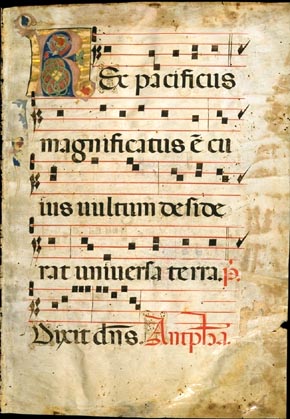
Penny follows a formula familiar to me from television: a sensitive, intelligent, yet psychologically wounded chief investigator, Armand Gamache. The personality of Gamache’s sidekick, Jean-Guy, contrasts strongly with his boss’s, but he too is seriously wounded. Both are overseen by an administrator who not only is unhelpful, but perhaps evil.
So far, all these premises must seem pretty familiar to readers of mysteries. What makes Penny’s book stand out is the great attention to detail she gives to her setting. All the action takes place in a remote contemplative monastery in northern Quebec. Here the monks spend most of their time singing and studying Gregorian chants. Penny does a wonderful job painting this world for the reader: the sights, the smells, the textures, but most particularly the sounds, the gorgeous, uplifting, godlike notes and harmonies issuing from the two dozen monks who sing traditional Gregorian chants throughout the day and night.
I have been part of small group which sings such chants myself, so I have an inkling of the power of this seemingly simple (some would say boring) music. But Penny teaches the reader to love the Gregorian chant or, if not to love it, to at least understand why some people would. She also does a wonderful job creating very distinct characters among the monks who, visually, in their black robes and white hoods, look almost identical.

This was a book I was sorry to put down and must confess I will be on the lookout for Book Eight in Chief Inspector Gamache series.
Finally I would like to say that I did not guess the identity of the murderer (I almost never do) but when it was revealed, his motives seemed very logical, and not a bit contrived. I did not feel that important information had been withheld from me, preventing me from making a good guess. For that I thank you, Louise Penny. And for transporting me into a fascinating, colourful and sonorous world.
8/10

